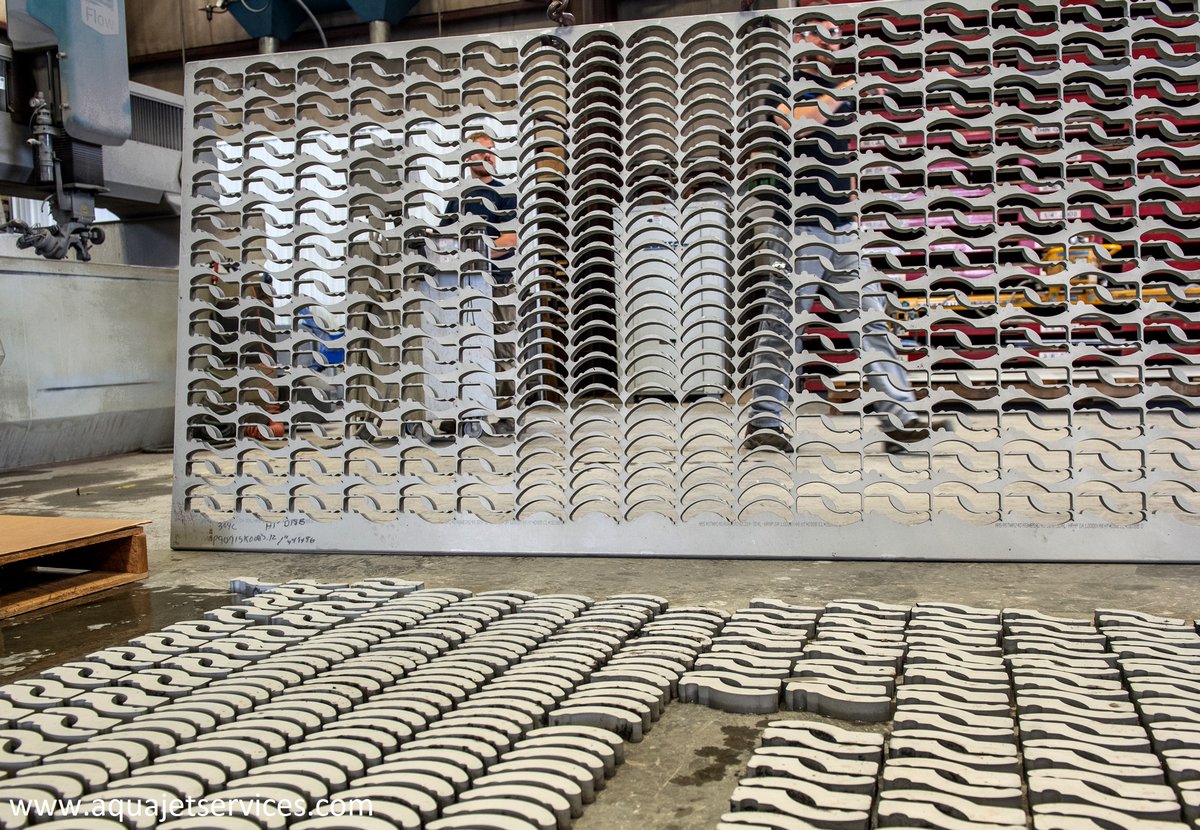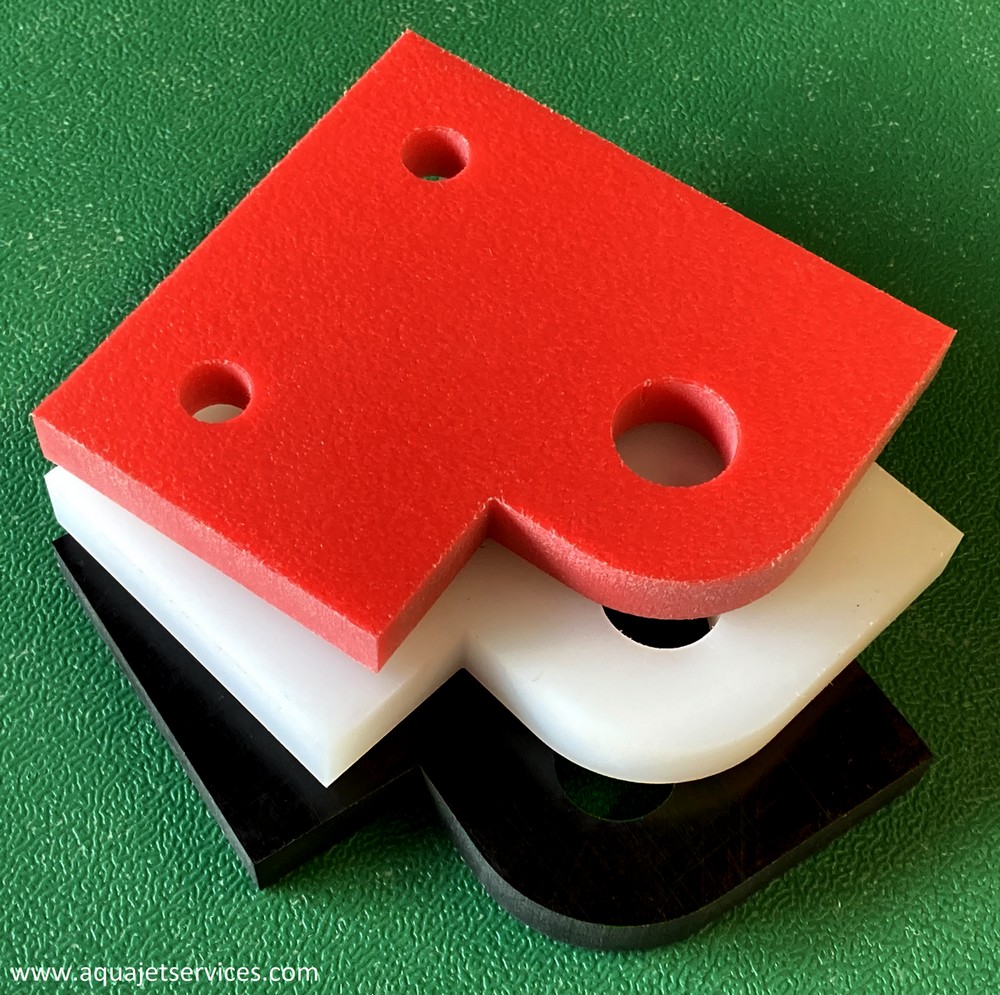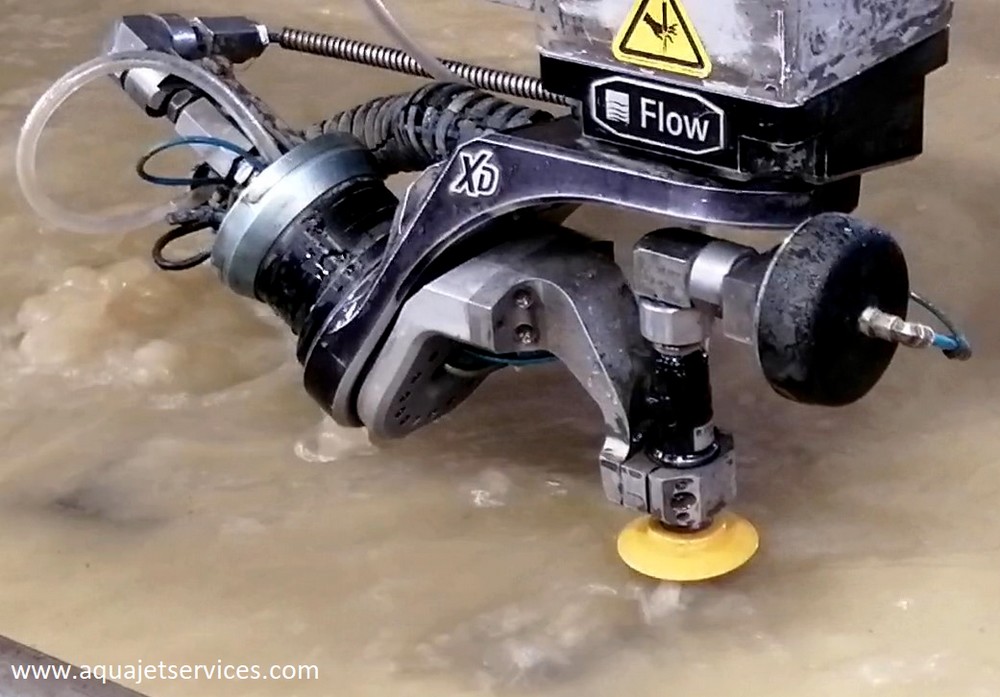Environmental Impact of Waterjet Cutting
Every cutting process has a negative impact on the environment, but waterjet cutting has possibly the least impact. Waterjets cut with water which is pressurized in pumps powered by electricity. In the case of abrasive waterjets, a screened or crushed stone product such as garnet is mixed in the water stream. Although the garnet typically cannot be reused, it is safe for disposal unless a hazardous material was cut by the stream. The water can be reused if needed.
Here are the environmental benefits of waterjet cutting.
Narrow Kerf
Waterjet cutting permits close spacing of nested parts, which minimizes waste of unused materials. The narrow kerf also minimizes the amount of material that is removed by the cut.
No Noxious Fumes
Thermal cutting methods—laser, plasma, oxy-fuel—all produce smoke. This can be a big problem when laser-cutting composites or plastics. However, waterjets make a cold cut that does not produce noxious gases.
No Dust
Mechanical cutting processes, such as milling machines or saws, can produce dust. Waterjets cut with water, so the dust is collected along with the spent abrasive.
No Cutting Gases or Lubricants
Unlike thermal cutting methods, waterjets do not use gases in the cutting process. Also, waterjets do not use lubricants, as do milling machines and saws.
No Hazardous Waste
The garnet abrasive, which is pulverized rock, is the waste product from waterjet cutting. The water used in the cut can be cleaned and reused or cleaned and dumped. Obviously, if a waterjet cuts toxic materials such as lead, all waste products require suitable disposal.
Noise
Waterjet cutting tends to be noisy, especially when piercing the material. However, the noise can be greatly reduced by cutting submerged, and there are no adverse effects to the cut speed or quality. This also reduces spray during piercing. Waterjet pumps are another source of noise, and they can be quieted through sound insulation or by being placed in a separate room.
Safe
Waterjets do not use hazardous chemicals or produce noxious gases. Because they do their cutting autonomously and there is very little exposed cutting stream, operator injuries are rare. When the high-pressure plumbing fails, it doesn’t blow up—there is just a harmless venting of steam from a failed line. For these reasons, waterjet cutting is one of the safest cutting methods available.





